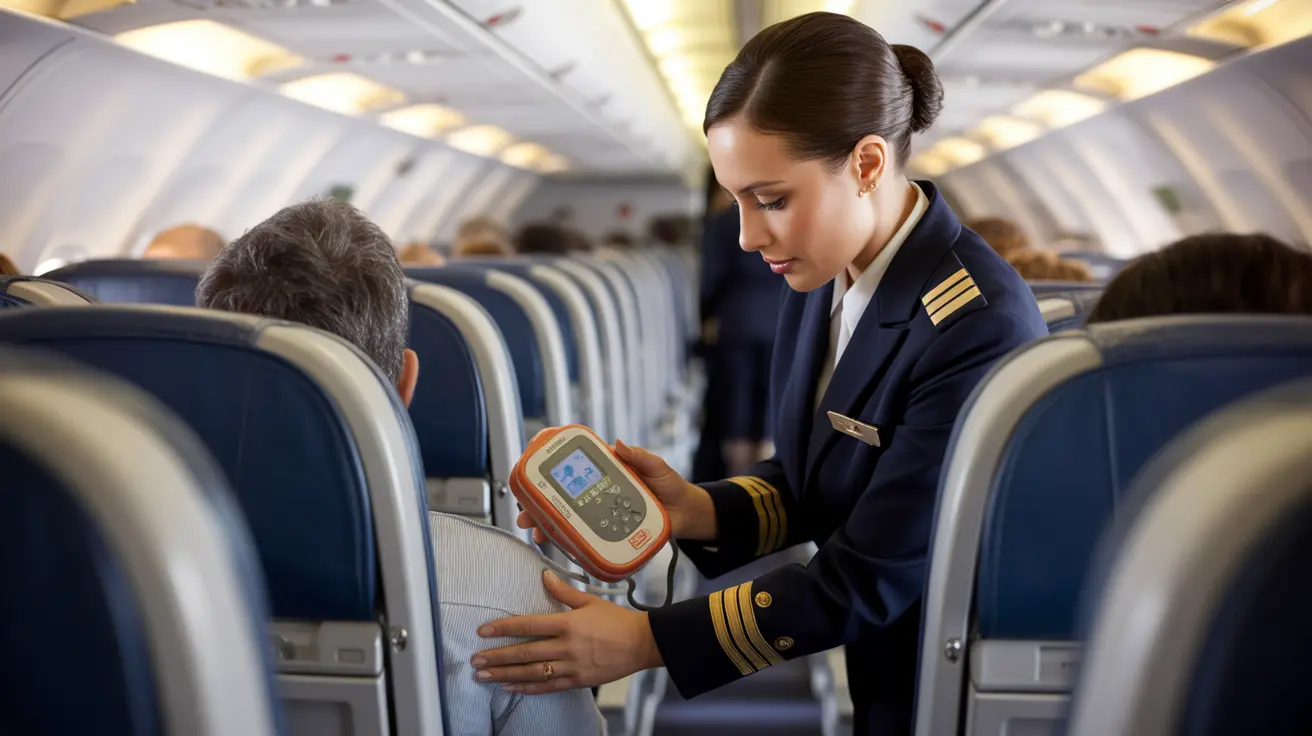Experiencing a heart attack during a flight can be a frightening and potentially life-threatening situation. Understanding how these emergencies are handled and what resources are available can help passengers feel more prepared and reassured when traveling by air.
This comprehensive guide explores the critical aspects of heart attacks on planes, including recognition of symptoms, emergency response procedures, and available medical equipment. We'll also discuss important prevention strategies for at-risk passengers.
Understanding Heart Attack Risks During Air Travel
Air travel creates unique physiological stresses on the body that can increase the risk of cardiovascular events. The combination of altitude changes, decreased oxygen levels, and prolonged sitting can potentially trigger cardiac issues in susceptible individuals.
Altitude and Cabin Pressure Effects
Commercial aircraft typically cruise at altitudes between 30,000 and 40,000 feet, with cabin pressure equivalent to approximately 6,000-8,000 feet above sea level. This reduced oxygen environment can place additional strain on the heart, particularly in those with existing cardiovascular conditions.
In-Flight Medical Emergency Response System
Airlines have established protocols and trained personnel ready to respond to medical emergencies, including heart attacks. Flight attendants receive regular training in basic life support and the use of emergency medical equipment.
Available Medical Equipment
Modern commercial aircraft are required to carry specific emergency medical equipment, including:
- Automated External Defibrillators (AEDs)
- Emergency medical kits containing various medications
- Oxygen supplies
- Basic first aid equipment
Communication and Support Networks
Airlines maintain contact with ground-based medical consultation services that can provide real-time guidance to crew members during medical emergencies. These services help assess the situation and determine whether a flight diversion is necessary.
Prevention and Risk Management
Passengers with heart conditions can take several precautionary measures to reduce their risk during air travel:
- Consulting their healthcare provider before flying
- Taking prescribed medications as directed
- Staying hydrated throughout the flight
- Performing simple exercises to promote circulation
- Avoiding alcohol and caffeine during the flight
Pre-Flight Medical Clearance
Individuals with recent cardiac events or unstable heart conditions should obtain medical clearance before flying. This evaluation can help determine if air travel is safe and what precautions may be necessary.
Frequently Asked Questions
What are the common symptoms of a heart attack that can occur during a flight?
Common symptoms include chest pain or pressure, shortness of breath, sweating, nausea, lightheadedness, and pain radiating to the arm, neck, or jaw. These symptoms may be more pronounced during flight due to cabin pressure changes and reduced oxygen levels.
How do flight attendants and crew respond if someone has a heart attack on a plane?
Flight attendants immediately assess the situation, provide basic life support if needed, retrieve emergency medical equipment, and seek assistance from any medical professionals on board. They also contact ground-based medical services for guidance and coordinate with the flight deck regarding potential diversion decisions.
What emergency medical equipment is available on airplanes to treat a heart attack?
Commercial aircraft are equipped with AEDs, emergency medical kits containing heart medications, oxygen supplies, and basic first aid equipment. These resources allow for initial treatment and stabilization of cardiac emergencies until the plane can land and transfer care to emergency medical services.
When and why might a flight be diverted if a passenger experiences a heart attack?
A flight may be diverted when the passenger's condition is deemed critical and requires immediate advanced medical care. The decision typically involves consultation with ground-based medical services and considers factors such as the severity of the situation, distance to suitable airports, and available medical facilities.
How can passengers with heart conditions reduce their risk of having a heart attack while flying?
Passengers can reduce their risk by getting medical clearance before flying, taking prescribed medications, staying hydrated, moving regularly during the flight, avoiding alcohol and caffeine, and informing the crew about their condition. Wearing compression stockings and performing seated exercises can also help maintain proper circulation.




